Waste, Chemical, and Cleanup Enforcement
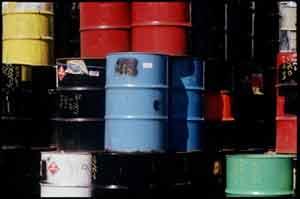
Hazardous waste drums stored improperly at an industrial waste facility. Drums must have proper labeling, sufficient aisle space, and be stored no more than two tiers high.
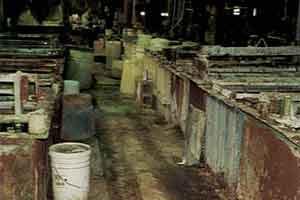
Drums of unknown waste at a paint manufacturing facility in the Midwest. Facilities are required to identify and properly label any drums containing hazardous wastes.

(Cont) Drums containing hazardous waste were in very poor condition and did not have proper labeling, as required by RCRA.
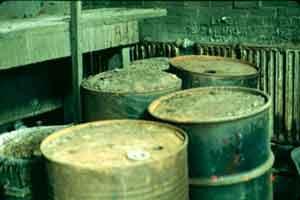
(Cont) Unlabeled drums of waste. RCRA requires that facilities make waste determinations on all hazardous wastes to ensure proper handling and management.
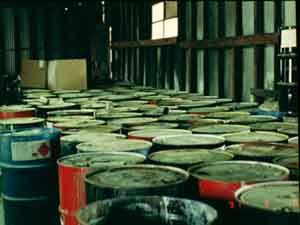
EPA inspector found unknown drums stored at a midwestern paint manufacturer. Facilities are required to identify and properly label all hazardous wastes.
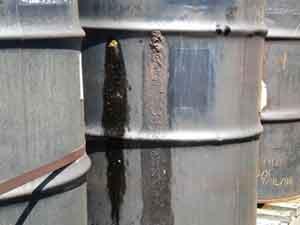
During an inspection of a Colorado facility, inspectors observed drums in poor condition with corrosion and pinhole leaks.
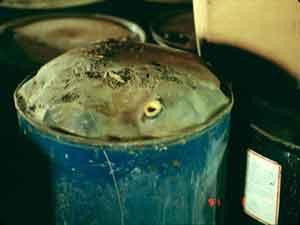
RCRA requires that drums be handled and stored in a manner that prevents leakage, deterioration or release of hazardous waste.

Ethyl ether, cyanides and acids at an Iowa federal facility laboratory. Incompatible chemicals can harm human health and the environment when stored together.
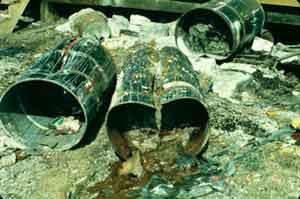
EPA inspectors discovered paint waste that had been dumped into the loading dock at a Kansas paint manufacturing facility.
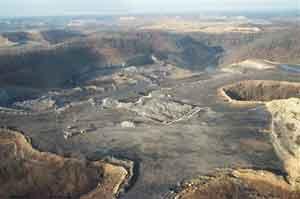
Coal mining facility in West Virginia. Mining and mineral processing facilities generate more toxic and hazardous waste than any other industrial sector.
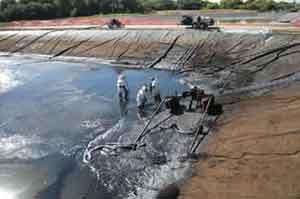
EPA enforced against a Wyoming refinery for storing hazardous waste sludge in a surface impoundment without a permit.
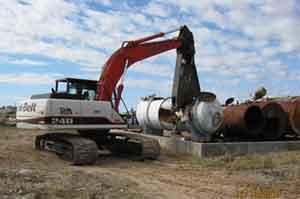
In 2011, EPA removed 14 storage tanks as part of cleanup efforts at the Gulfco Marine Maintenance Superfund Site in Texas, a 40-acre former barge cleaning and repair facility.
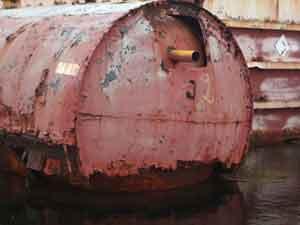
(Cont) The tanks had leaked polycyclic aromatic hydrocarbons, pesticides, chlorinated hydrocarbons and metals into the soil.
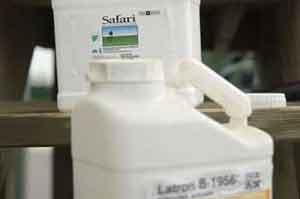
When pesticides aren't handled properly they can make people sick and harm the environment. Companies must label pesticide products correctly.

Lead contamination can cause a range of health effects from behavioral problems and learning disabilities, to seizures and death. Children six years old and under are most at risk.
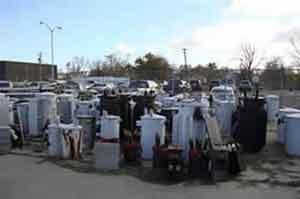
Transformers containing PCBs at a utility in Detroit. When released into the environment, PCBs persist for many years. EPA has classified PCBs as probable human carcinogens.
Información relacionada disponible en español (Related Information in Spanish)
EPA enforces a variety of environmental requirements related to pollution by waste and chemicals. For more on EPA's enforcement process, go to Basics on enforcement.
On this page:
On other pages:
- Waste, Chemical and Cleanup Policy, Guidance and Publications
- Search for waste, chemical & cleanup cases and settlements
- Find hazardous waste facility enforcement data
Waste Enforcement
Mining and mineral processing. EPA is taking action to protect communities and the environment from illegal or high risk hazardous waste operations at phosphoric acid and other high risk mineral processing facilities. Reducing pollution from mining and mineral processing operations is one of EPA's national initiatives.
Hazardous wastes. EPA enforces requirements under the Resource Conservation and Recovery Act regarding the safe handling, treatment, storage and disposal of hazardous wastes. EPA and the states verify RCRA compliance with these requirements through a comprehensive compliance monitoring program which includes inspecting facilities, reviewing records and taking enforcement action where necessary. The RCRA compliance assistance program provides businesses, federal facilities, local governments and tribes with tools to help meet environmental regulatory requirements.
Underground Storage Tanks. EPA enforces requirements under Subtitle I of the Resource Conservation and Recovery Act. These requirements focus on preventing, detecting, and cleaning up releases. These provisions are enforced by EPA and by states that are authorized to operate their own program in lieu of the federal program.
Lead-based paint. EPA enforces requirements under the Residential Lead-Based Paint Hazard Reduction Act. Contractors and construction professionals who work in pre-1978 housing or child-occupied facilities must follow lead-safe work practice standards to reduce lead exposure. This includes providing owners, tenants, and child care facilities with lead-based paint information; and notifying them about the presence of lead. Owners and landlords of pre-1978 residential housing must give tenants a lead-based paint warning pamphlet and notify the tenants of known lead-based paint in the housing. Sellers are subject to similar requirements. Learn more about lead.
Asbestos. EPA enforces regulations under the Asbestos Hazard Emergency Response Act (AHERA) on how to respond to asbestos in schools. EPA also enforces worker protection standards for certain state and local government employees who are not protected by the asbestos standards of the Occupational Safety and Health Act.
Accidental Releases. EPA enforces requirements under Section 112(r) of the Clean Air Act to prevent chemical accidents and releases. Owners and operators of sources producing, processing and storing extremely hazardous substances must identify hazards associated with an accidental release, design and maintain a safe facility, prepare a Risk Management Plan (RMP) and minimize consequences of accidental releases that occur. EPA conducts inspections and and reviews facility RMPs to verify compliance and ensure the quality of the overall preparedness, prevention and response.
Chemical Enforcement
Pesticides. EPA enforces requirements under the Federal Insecticide Fungicide and Rodenticide Act (FIFRA) that govern the distribution, sale and use of pesticides. EPA takes enforcement actions to address the distribution or sale of unregistered pesticides, registered pesticides whose composition differs from that submitted at registration, and registered pesticides that are misbranded or adulterated. EPA may also stop the sale or seize pesticide products which do not meet FIFRA requirements. One focus of EPA's FIFRA enforcement program is to ensure pesticides entering the United States meet FIFRA requirements. To learn more about the imports enforcement program, see recent import enforcement activities.
EPA and the states verify FIFRA compliance through a comprehensive FIFRA compliance monitoring program which includes inspecting facilities, reviewing records and taking enforcement action where necessary. The FIFRA compliance assistance program provides businesses, federal facilities, local governments and tribes with tools to help meet environmental regulatory requirements.
Toxic Chemicals. EPA enforces requirements under the Toxic Substances Control Act (TSCA) which regulates the introduction of new or already existing chemicals. TSCA requirements for chemical manufacturers or importers include reporting, record-keeping and testing of the chemical substances.
EPA and the states verify TSCA compliance through a comprehensive TSCA compliance monitoring program which includes inspecting facilities, reviewing records and taking enforcement action where necessary. The TSCA compliance assistance program provides businesses, federal facilities, local governments and tribes with tools to help meet environmental regulatory requirements.
PCBs. EPA enforces regulations under TSCA. TSCA prohibits the manufacture of polychlorinated biphenyls (commonly known as PCBs), controls the phase-out of their existing uses, and sees to their safe disposal.
Emergency Planning and Community Right to Know (EPCRA). EPA enforces requirements under EPCRA to ensure that facilities are prepared for chemical emergencies and report any releases of hazardous and toxic chemicals. EPCRA requires that citizens be informed of toxic chemical releases in their area. Industrial facilities must annually report releases and transfers of certain toxic chemicals. This information is publicly available in the Toxics Release Inventory (TRI) database.
EPA and the states verify EPCRA compliance through a comprehensive EPCRA compliance monitoring program which includes inspecting facilities, reviewing records and taking enforcement action where necessary. The EPCRA compliance assistance program provides businesses, federal facilities, local governments and tribes with tools to help meet environmental regulatory requirements.
Cleanup Enforcement
EPA's cleanup enforcement program protects human health and the environment by getting those responsible for a hazardous waste site to either clean up or reimburse EPA for its cleanup. EPA uses a number of cleanup authorities independently and in combination to address specific cleanup situations.
- Superfund. Under the Comprehensive Environmental Response, Compensation, and Liability Act (CERCLA, commonly known as Superfund), EPA finds the companies or people responsible for contamination at a site, and negotiates with them to clean up the site themselves or to pay for another party to do the cleanup.
- Corrective Action. When solid or hazardous waste is not properly managed and contamination results at facilities regulated by the Resource Conservation and Recovery Act (RCRA), EPA and the states may step in to oversee the cleanup.
- Leaking Underground Storage Tanks. RCRA provides EPA with several enforcement authorities to ensure that releases from leaking underground storage tanks (USTs) are cleaned up and owners/operators comply with other RCRA requirements.
- Brownfields and Land Revitalization. The sustainable reuse of previously contaminated property is an important goal of EPA's hazardous waste cleanup programs.


